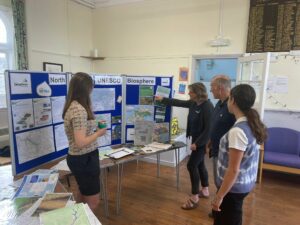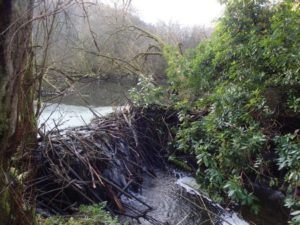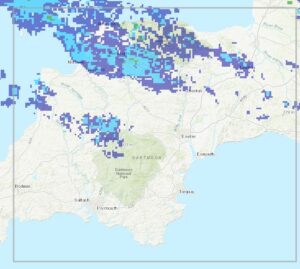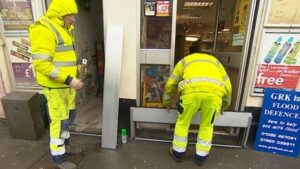Improving flood resilience across Devon
There are many steep-sided hills across Devon, where water travels quickly downhill during intense rainfall events, due to the soil type and land management. This can cause flash flooding to the surrounding farms, villages and towns.
Climate change predictions suggest the UK will experience more intense and frequent rainfall events, alongside drier summers in the south, putting pressure on water availability.
This project aims to reduce the impact of flooding to communities across Devon through a combination of interventions to improve flood and drought resilience

Project aims
When it rains in steep-sided catchments, communities often only have a few hours to activate their flood plan and deploy property flood resilience measures. The project aims to provide more time for communities to be ready by:
- helping communities to identify flood risk issues, develop emergency plans and be ready to activate them
- slowing the flow of water and storing water in the river catchment through natural flood management measures
- providing localised flood forecasting alerts and other smart technologies to the community to improve preparation time for flood events
- protecting community assets such as village halls and local shops to provide communities with shelter and resources during flood events
Project activities
We are testing innovative approaches (in combination) to reduce the effects of flooding. These approaches fall into four main categories:
Community preparedness and support
The community, including land managers and farmers, has a key role to play in creating places more resilient to climate change impacts, through planning for and adapting to future flooding.
We will work with local communities to identify flood risk issues and develop and deliver their own flood resilience interventions, in collaboration with the project partner organisations.
Activities involve engaging with councils and parish groups, updating flood plans and identifying vulnerable people.
This will ensure that communities are able to take action and respond effectively to potential flood events, creating a flood resilient future.

Natural flood management (NFM)
NFM measures can slow the flow or store flood waters, to improve community flood resilience, alongside reducing vulnerability to climate change.
We will work with communities and landowners to identify the best places for natural flood management, providing an opportunity for local neighbourhoods and groups to become actively involved in how flood resilience is achieved in their local areas.
These measures include leaky dams, planting woodlands and improved soil, crop or land management to slow the flow of water or provide natural storage during flood events, alongside further benefits of reducing carbon emissions and improving wildlife habitats.

Smart technology
Smart technologies are used to improve preparation times before flood events, enabling communities to deploy flood action plans.
We will test and trial new technologies, to help communities prepare and react quicker to potential flooding. These technologies include surface flood water forecasting pilot schemes, rainfall radars, smart gullies and soil moisture sensors.

Flood resilience measures for community assets
Property flood resilience measures include door and window flood guards, domestic flood gates and pumps. They are designed to reduce damages from flood water experienced by property owners, occupiers and businesses.
We are targeting property flood resilience measures at village halls, doctor’s surgeries, local shops and pubs. These are considered community assets where people can take shelter or receive supplies in a flood event, to enable faster recovery.

What do we hope to achieve?
- Communities have an increased understanding of their river catchment and the need to become more flood resilient.
- Agricultural and surface water run-off is decreased as a result of improved land management and implementation of natural flood management.
- Smart technologies enable communities to be better prepared in their response to flood events.
- Community assets such as shops and village halls are better protected from and adapted to floods, improving recovery time.